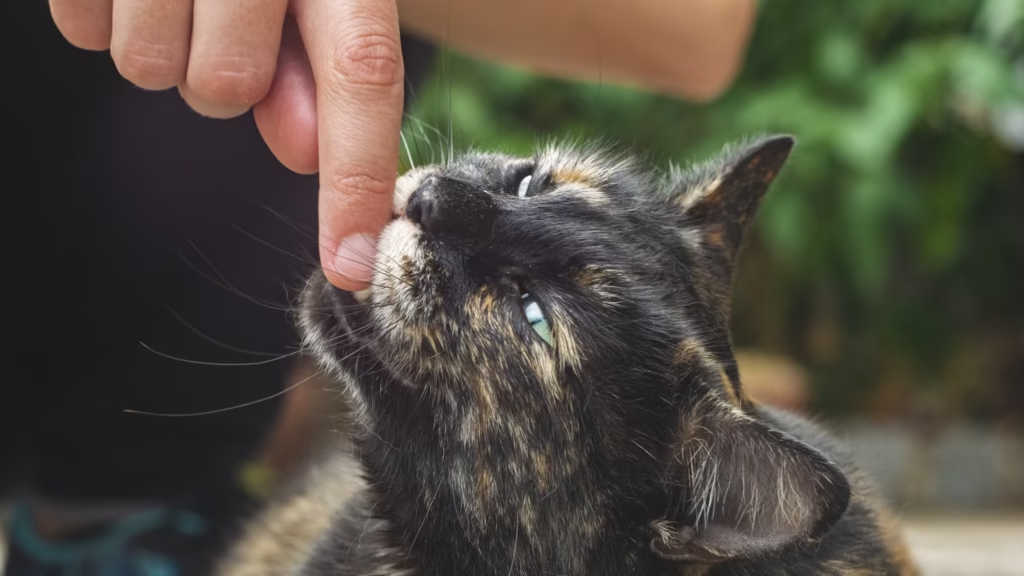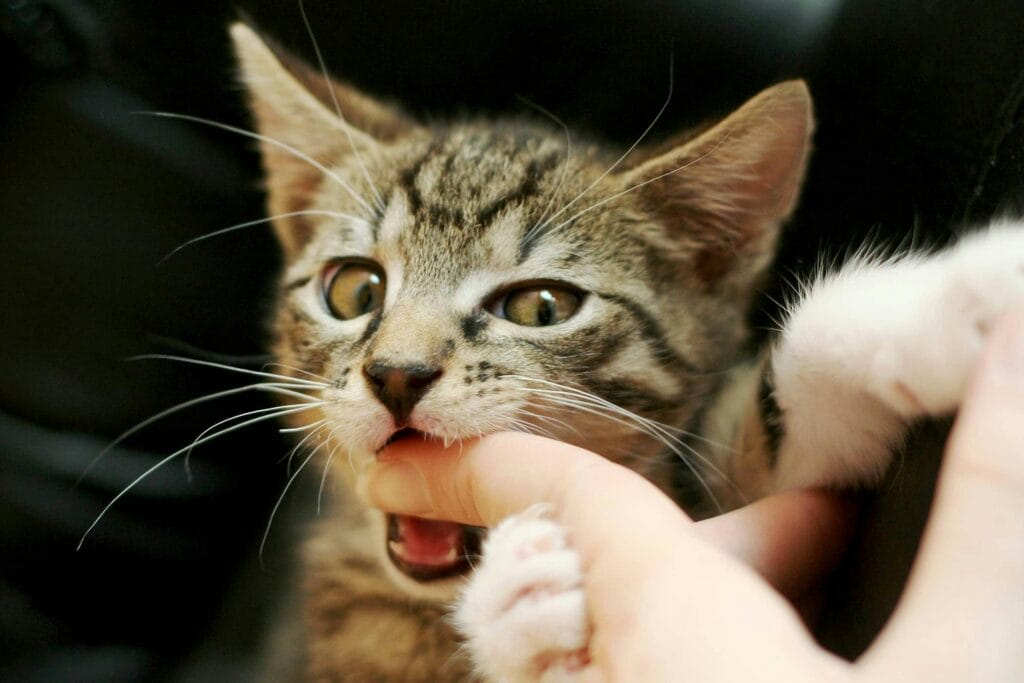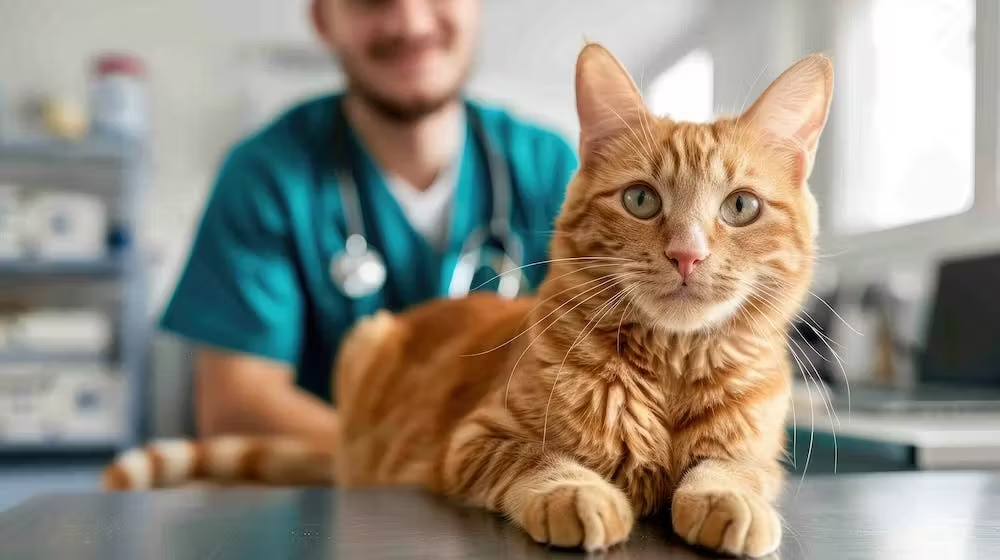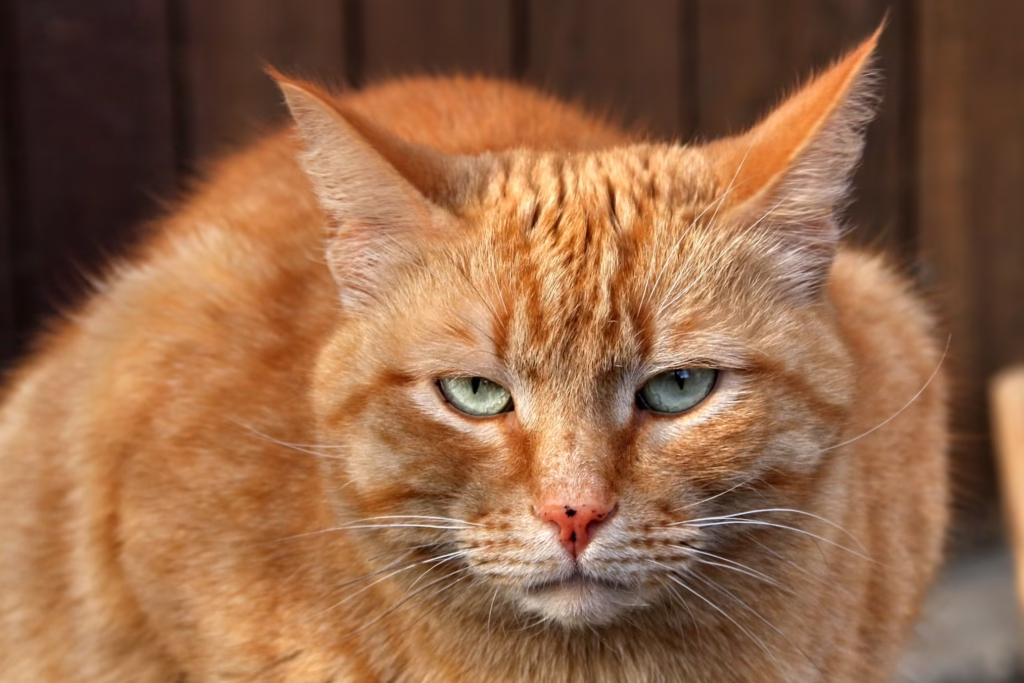Why Does My Cat Bite Me Then Lick Me? 😼💋 The Ultimate Guide to Your Cat’s Love Nips!

Is your cat giving you mixed signals with bites followed by licks? 🐾 Discover the 7 surprising reasos behind this behavior (it’s not always love!), vet-approved solutions, and how to respond—plus, pro tips to decode your feline’s quirky habits!
📖Table of Contents
🔍 The Bite-Lick Mystery: What’s Really Going On?
Cats communicate through body language, and the bite-lick combo is their version of mixed signals! Here’s the science:
- Biting = Overstimulation, play, or warning.
- Licking = Grooming, bonding, or apology.
Fun Fact: Cats have scent glands in their cheeks and lips. When they lick you, they’re marking you as THEIR human! 😽
😼 7 Reasons Your Cat Bites Then Licks You

1. Overstimulation (Petting-Induced Aggression) 😾➡️😽
The Science:
Cats have super-sensitive nerve endings in their skin. Petting overloads their system → sudden bite = “STOP!” → Immediate lick = “But I still love you!”
Vet-Verified Signs:
✔ Twitchy tail tip
✔ Skin rippling (back muscles tense)
✔ Ears rotating sideways
Pro Fix:
▶︎ 3-Stroke Rule: Pet max 3 times → pause → let cat re-initiate.
▶︎ Sweet Spot Only: Focus on cheeks/chin (less overstimulating).
Fun Fact: This is why cats suddenly attack your hand during belly rubs!
2. Grooming Instincts Gone Wild 🧼🐾
The Science:
Mother cats groom kittens with gentle nips to clean hard-to-reach spots. Your cat may treat you like their giant, clumsy kitten!
Key Clues:
✔ Bites are gentle & rhythmic
✔ Focused on fingers/hair/ears
✔ Often happens when you’re relaxed
Pro Fix:
▶︎ Offer a silicone grooming brush to redirect.
▶︎ Reward calm grooming with churu treats.
Cute Alert: Some cats “groom” then get embarrassed and bite!
3. Playtime Confusion 🎭🐁
The Science:
Kittens learn hunting through bite-play. If you’ve ever wiggled fingers/toes at them, they think you’re prey!
Danger Signs:
✔ Pouncing from hiding spots
✔ “Bunny kick” attacks
✔ Dilated pupils + crouched stance
Pro Fix:
▶︎ Never use hands as toys (always use wand toys).
▶︎ “Toy Sandwich” Method: Hold toy between hand and cat’s mouth.
Vet Tip: Play until they’re panting (yes, cats can pant!) to burn energy.
4. Love Bites (Feline Kisses!) 💘🦷
The Science:
Gentle nibbles release endorphins in cats. It’s their version of a hug!
How to Tell:
✔ Bites don’t break skin
✔ Accompanied by purring/kneading
✔ Usually happens when cuddling
Pro Tip:
▶︎ Say “Oww!” in a high pitch to teach softer bites.
▶︎ Offer a love bite alternative (soft blanket to knead).
Heart-Melter: Some cats nibble while making direct eye contact – ultimate trust!
5. Pain or Discomfort 🚑🤕
The Science:
Cats hide pain instinctively. Biting → “Don’t touch there!” → Licking to self-soothe.
Red Flags:
✔ Bites when touching specific areas (hips, belly)
✔ Excessive licking between bites
✔ Hissing/growling unprovoked
Vet-Approved Action:
▶︎ At-Home Check: Gently feel along spine/joints for flinching.
▶︎ Emergency Signs: Limping, appetite loss, litter box avoidance.
Shocking Stat: 60% of cats over age 6 have undiagnosed arthritis (ISFM 2023).
6. Dominance/Control 🐱👑
The Science:
Cats establish hierarchy through controlled aggression. Bite = “I’m in charge” → Lick = “But we’re cool.”
Power Moves:
✔ Biting when you try to move them
✔ Blocking doorways then biting
✔ Staring contests before attacks
Pro Fix:
▶︎ Hand Feed Treats to rebuild respect.
▶︎ Environmental Control: Use baby gates to manage space.
Wild Fact: This behavior stems from wild cat colony dynamics!
7. Stress/Anxiety 🌪️😿
The Science:
Stress spikes cortisol → overgrooming → accidental biting from tension.
Triggers:
✔ New pet/baby in home
✔ Construction noises
✔ Dirty litter boxes
Vet-Approved Solutions:
▶︎ Feliway Diffusers (mimics calming pheromones).
▶︎ Safe Spaces: Cardboard boxes at different heights.
Did You Know? Cats lick/bite themselves (and you!) to self-soothe like humans bite nails.
📊 Bite-Lick Behavior Decoder Chart
| Bite Type | Lick After? | Likely Reason |
|---|---|---|
| Gentle nibble | Yes | Love bite/grooming |
| Hard chomp | No | Fear/aggression |
| Repeated nips | Sometimes | Play frustration |
| Slow-motion bite | Yes | Overstimulation |
🚨 Immediate Action Guide
If the bite:
- Hurt but no blood: Walk away silently (no attention = bad reward).
- Drew blood: Wash with antibacterial soap, monitor for swelling.
- Was unprovoked: Video it for your vet (could indicate neurological issues).
Vet Quote:
“Never punish biting – it increases stress. Instead, identify the trigger.” – Dr. Mikel Delgado, Cat Behaviorist
🐾 Pro Tip Playbook
- Yelp Technique: High-pitched “OW!” teaches bite inhibition.
- Toy Buffer: Keep a stuffed animal nearby to redirect bites.
- Puzzle Feeders: Mental stimulation reduces frustration bites.
Bonus: Massage your cat’s facial pheromone zones (cheeks/temples) to calm them pre-petting!
🛑 How to Respond: Vet-Approved Do’s & Don’ts

✅ DO:
✔ Freeze (no sudden movements)
✔ Say “Ouch!” (high-pitched, like a cat)
✔ Redirect with a toy (da bird wand works best!)
❌ DON’T:
✖ Punish (makes it worse)
✖ Pull away fast (triggers chase instinct)
✖ Ignore red flags (could be pain-related)
Vet Insight:
“Bite-licking is usually normal, but if it’s hard biting, see a vet to rule out pain.” — Dr. Gary Richter, DVM
🎓 5 Vet-Approved Training Methods to Stop Nipping
1. The “Yelp & Freeze” Technique (Most Effective!)
How It Works:
- When bitten, say “OW!” in a high-pitched voice (mimics a hurt kitten).
- Freeze completely for 10 seconds (no talking/moving).
- Walk away if biting continues.
Why It Works:
- Teaches bite inhibition (like littermates would).
- Removes the “fun” of biting (no reaction = no reward).
⏳ Timing is Critical: React within 0.5 seconds of the bite for best results.
2. Redirection: The Toy Buffer Strategy
What You’ll Need:
- Da Bird wand toy (best for mimicking prey)
- Kick sticks (for bunny-kick instincts)
- Automated lasers (for solo play)
Step-by-Step:
- Before petting, place a toy between your hand and cat.
- If they nip, immediately redirect to the toy.
- Reward with treats when they attack the toy instead.
💡 Pro Tip: Keep toys in every room for quick access!
3. Positive Reinforcement Training
What to Reward:
✔ Soft paws (no claws)
✔ Gentle sniffing/licking
✔ Calm body language
Best Rewards:
- Churu squeezable treats (high-value)
- Freeze-dried chicken (easy to dispense)
- Clicker training (for precision timing)
Sample Training Session:
- Pet for 2 seconds → If no bite, click + treat.
- Gradually increase petting duration.
- If they nip, restart from step 1.
📈 Data: Cats trained with positive reinforcement show 68% faster improvement (AVSAB 2023).
4. Environmental Enrichment (Boredom Busters)
Must-Have Tools:
- Puzzle feeders (slow eating = mental stimulation)
- Cat trees (height = confidence)
- Window perches (bird-watching reduces frustration)
DIY Idea:
▶︎ Muffin tin + ping pong balls = cheap puzzle game!
5. Time-Outs (The Right Way)
Common Mistake:
❌ Locking cats in rooms (increases stress).
Vet-Approved Method:
- After a bite, say “Too bad!” in a neutral tone.
- Leave the room for 2-5 minutes.
- Return only when calm.
⚠️ Key Point: Time-outs work only if done consistently.
🚨 When Training Isn’t Working: Next Steps
1. Rule Out Medical Causes
Sudden aggression? Could signal:
- Dental pain (broken tooth)
- Arthritis (touch sensitivity)
- Hyperthyroidism (irritability)
🔍 Vet Tests Needed:
- Bloodwork (T4 levels)
- Oral exam under anesthesia
- X-rays (for joint pain)
2. Medication & Supplements
For severe cases, vets may prescribe:
- Fluoxetine (anti-anxiety)
- Gabapentin (pain/aggression)
- Zylkène (natural calming)
💊 Note: Never use human meds without vet guidance!
📊 Training Progress Tracker
| Week | Technique Used | Bite Frequency | Notes |
|---|---|---|---|
| 1 | Yelp & Freeze | 10x/day | Started redirecting |
| 2 | Toy Buffer | 5x/day | Less hard bites |
| 4 | Clicker Training | 2x/day | Responding to “gentle” cue |
📥 Downloadable: Free Bite-Log Template
🌟 Pro Tips for Long-Term Success
✔ Trim claws regularly (reduces injury risk)
✔ Schedule play sessions (10 mins AM/PM)
✔ Use synthetic pheromones (Feliway diffuser)
Final Vet Wisdom:
“Consistency is key. If everyone in the household reacts differently, training fails.” – Dr. Lynn Bahr, Feline Behavior Consultant
🚩 When to Worry: Red Flags

Rush to the vet if:
🚨 Biting is hard & aggressive (not playful)
🚨 Licking a specific spot obsessively (could be pain)
🚨 Accompanied by hissing, growling, or hiding
Possible Causes:
- Arthritis (common in older cats)
- Dental pain (check for red gums)
- Hyperesthesia (skin-rolling syndrome)
🌟 Pro Tips for a Happier Cat
✔ Feliway diffuser (reduces stress)
✔ Vertical spaces (cat trees = confidence)
✔ Scheduled playtime (10 mins AM/PM)
Weird Trick: Blink slowly at your cat—it’s a kitty “I love you!” 😘
❓ FAQs: 21 Burning Questions Answered
Q: Is bite-licking a sign of affection?
A: Sometimes! It’s called a “love bite”—gentle nibbles mean “You’re family!”
Q: Why does my cat bite me but not my partner?
A: You might pet differently or smell like food (lotions/perfumes).
Q: Should I hiss at my cat to stop biting?
A: No! It can backfire. Instead, yelp & walk away to teach boundaries.
📝 Final Checklist
✅ Observe body language (tail, ears, pupils)
✅ Provide daily interactive play
✅ Schedule a vet check if biting is violent
✅ Use positive reinforcement (treats for gentle behavior)
